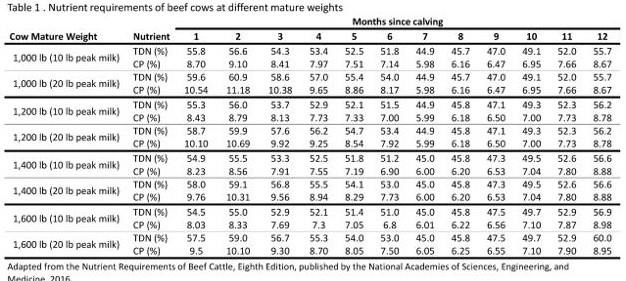By Nicole Correa and Hillary Pope
Preparing your livestock for the winter months may seem less daunting here in the South, unlike some mid-western states that see a lot of snow. However, it is just as vital for us as it is for others. We would like to include a few tips and suggestions to help producers ensure the most productive livestock possible. A few crucial considerations include hay selection, breed on your operation, and whether they are getting the proper amount of water. For hay- what type and why? How much will you be providing? What stage of production are you feeding?
Considering the Body Condition Scoring (BCS) of all livestock will also be very important in determining the herd’s needs and whether splitting livestock is necessary. Generally, a suitable score is between 5-7, where the lower the number, the thinner the animal. Keeping livestock within this range for winter will allow them to handle colder conditions.1 For high re-breeding rates, it is essential to note that cattle must be at a 5 or higher2, so even during the warmer months, keeping them within the 5-7 range is ideal.
During the warmer months, dry cows consume about 1.9-2% of their body weight in forages, and a lactating cow consumes 2.4-2.5% of her body weight2. Providing 3% of their body weight daily during the winter will ensure that each animal gets all they need. This is because livestock use digestion to warm up their body. As digestion occurs, the body gets warmer. For every degree drop in temperature below 55ºF, a cow’s energy requirements increase by 10%3.
If you cannot provide hay 24/7, providing more hay during colder times of day, such as overnight, will help to keep them warm and will help to keep the pounds on them. Providing higher quality hay will be very important for livestock in more demanding stages of production, such as lactating cows. When cattle are fed lower-quality hay, they will decrease their consumption2, making it more difficult for them to weather the winter temperatures.
For those who want to add a variety to their cattle diets and potentially help their pocketbook, adding winter forages can help. They have highly digestible forages and provide added protein2 lacking in lower quality hay. It is recommended that you allow plants to be 6-8 inches before the start of grazing and allow them 3-4 inches upon moving the cattle out of the pasture. Grazing too early can reduce annual production by at least 1/3 throughout the grazing season, so timing and management are vital4. Allowing cattle to graze on winter forages for just 3 hours a day can provide them with up to 30% of the nutrients that cattle will need per day2. Integrating this into your management system allows you to save your higher-quality hay during the gap between perennial spring/summer grazing and the start of winter grazing.
Another way to provide adequate nutrition is to provide protein or mineral tubs. Supplements can account for 5-20% of the total daily dry matter intake5. Offering protein and energy supplementation will stimulate livestock’s appetite and digestibility of low-quality forages. Free choice mineral needs to be just that, free choice, or the cattle will not get the number of nutrients they need. If they are rushing for the tubs or consuming a lot at once, they should get minerals offered more frequently. Place your mineral tubs away from water and in poorly grazed areas to balance your grazing pressure. Another option is to provide a supplemental grain ration to go along with their forage consumption. For a specific ration, please contact your local livestock and forages agent.
A final consideration for nutrition requirements is water consumption in the winter. Cattle are less likely to consume water during the winter months, going from roughly 2 gallons/100 lb. body weight to 1 gallon/100 lb. body weight6. Providing fresh, clean water will help them to consume the proper amount. It is also possible to include free choice salt or salt in their diet to help ensure that cattle are drinking7.
The chart below, taken from an article by Dr. Francine Henry with UGA5, discusses some requirements of beef cattle at different mature weights.

Aside from nutrition, there are a few additional considerations and methods to ensure that cattle stay healthy during the colder months. Muddy conditions can affect an animal’s ability to keep warm, even if the animal is getting the proper amount of forage8. Proper management of forages and rotation to provide areas where cattle can stay out of the mud is critical. Of course, different breeds will also tolerate the cold differently. Although the brahman-influenced cattle are great for the heat, they have a harder time than some other breeds because of their short hair coats9. Keeping that in mind will help you determine whether you need to provide shelters like a 3-sided run-in or a windbreak. During severe winter weather, “A windbreak is the single most important factor for the success of your cattle10.”
Source : clemson.edu